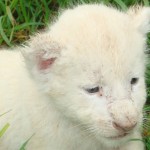by Adam Cruise, courtesy of Conservation Action Trust

Recent reports say that one of Zimbabwe’s largest private wildlife areas, Bubye Valley Conservancy, is suffering from an overpopulation of lions. The conservancy has more than 500 lions and has warned that its lion population has become unsustainable and that it may even have to cull around 200 individuals.
Bubye management have justified the proposed cull, saying the lions are decimating populations of antelope, along with other animals such as giraffe, cheetah, leopards and wild dogs.
Despite the many contentions by its management and owners that Bubye exists for the greater ecological good the conservancy’s primary existence is trophy hunting.
On their website, Bubye state, “Sustainable trophy hunting provides the incentive and revenue to achieve this amazing conservation success – and for that the Bubye Valley Conservancy makes no apology.”
The conservancy boasts that there “are more lions at much greater population densities in hunting areas than anywhere else in Zimbabwe. Lions thrive when given the resources and protection incentivised by trophy hunting.”
But why has Bubye got too many lions?
According to a National Geographic’s Voices post, Dr Byron du Preez, an independent scientist focusing on lion ecology at the Bubye Valley Conservancy, says Bubye is “hopeful that it will be able to translocate some lions but that its plans have been intentionally derailed”.
Du Press, who says he is neither pro- nor anti-hunting, states that “habitat destruction is the lions biggest enemy, and there is basically no more space left in Africa for a new viable population of lions”.
While habitat loss might be a real issue, the problem with the Bubye management model is the risk that it becomes less concerned about conservation than it does for commercial gain.
Dr Pieter Kat, internationally acknowledged lion expert and lead researcher for LionAid, an international organization specifically dedicated to lion conservation, says the “overpopulation appears intentional”.
Kat says the 3 400 km² conservancy has about 15 lions per 100 km². The natural density of lions, for example, in the Kruger Park is about 5-6 per 100 km² in the north, which is similar in habitat to Bubye, and 7-8/100 km² in the south. Bubye therefore is more than double the natural density for lions.
According to initial research results by Wildlife Conservation Research Unit (WildCRU), in the Department of Zoology at Oxford University, Bubye’s high number of artificial waterholes has facilitated the population explosion of lions.
Trophy Hunting is big business in Africa bringing in a revenue of US$ 200 million (about R2.9bn at R14.93/$) and lions are one of the biggest earners.
It costs around US$50 000 to shoot a lion in Zimbabwe. Proponents of trophy hunting argue that this revenue goes back into conservation and community upliftment schemes but separate reports by Economists at Large, the International Union for the Conservation of Nature (IUCN) and Humane Society International questioned the validity of these claims stating that most of the money is for profit by private landowners and government officials.
Trophy hunting for commercial gain, not conservation
Bubye’s chief Professional Hunter, Pete Fick, bemoans the fact that foreign hunters are no longer coming to Bubye to thin their lion population, a major reason they cite for the proposed lion cull.
In 2015 both Australia and France banned the import of lion trophies while the United States Fish and Wildife Service (USFWS) included African lions on its endangered species list.
The FWS decision, which recently added two subspecies of lion under the Endangered Species Act due habitat loss, loss of prey, retaliatory killing due to increased human-lion conflicts, inadequate regulatory mechanisms and weak management of protected areas – doesn’t ban trophy hunting outright.
But as Ian Michler, the lead character in the documentary Blood Lions in an interview with National Geographic says, “it now puts the onus on the hunter – they have to show how their lion trophy is making a contribution to the conservation of the species before an import permit will be issued.”
Fick views the FWS as “the biggest threat to most of Africa`s lions.”
The conservancy wrote a letter to the department requesting them to reconsider the listing, but the FWS stood firm. Their directive sends a clear message that breeding lions solely for commercial use is no longer acceptable.
Christine Macsween, director and founder of LionAid asked in a report in January at a time when Bubye were raffling hunting tickets to shoot lions, “Are the Bubye fenced lions offered to trophy hunter’s guns anything to do with wild lion conservation?”
Macsween says the lions “live behind a 2.1m electric fence. The fenced lions do not live in any ‘natural’ environment, and are there to be shot.” She questions whether Bubye is just “another form of canned hunting.”
After repeated requests, Bubye have declined to comment whether the lions are fenced.
Fick claims that Bubye is “the most successful lion story ever in Africa” but Dr Kat counters that in reality “this current call to cull 200 lions is in recognition of past bad management procedures”.
Bubye now realize “they have too many lions primarily because they are eating into their stock of other valuable hunting species.” It is poor conservation management and they are trying to blame the USFWS directive for the current problem.
Ultimately, it’s the lions that have to pay the price.
Original article here.




